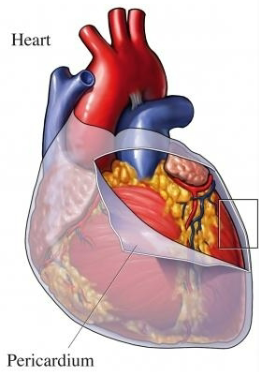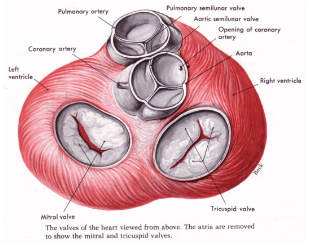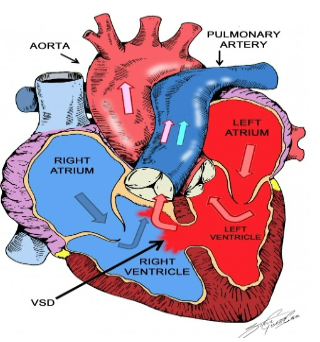The Cardiovascular System
1/19
Earn XP
Description and Tags
Flashcards based on some slides on the cardiovascular system.
Name | Mastery | Learn | Test | Matching | Spaced |
|---|
No study sessions yet.
20 Terms
Systemic circulation
Delivers blood to the body while carrying away waste
Pulmonary circulation
Eliminates carbon dioxide and oxygenates blood using the lungs
Heart size
About 14 by 9 cm, or the size of a fist
Heart location
The mediastinum, or a cavity in the center of the chest

Coronary arteries
Arteries that supply blood to the heart; blockages in these cause heart attacks
Apex
The distal end of the heart

Fibrous pericardium
Layer that encloses the heart with two layers, like a bag
Pericardial cavity
Contains fluid reducing friction during heart beats
Epicardium
Outer layer of the heart wall that reduces friction
Myocardium
Middle layer of the heart wall that mainly consists of the cardiac muscle
Endocardium
Thin inner laying of the heart wall within the chambers of the heart
Atria
The superior chambers of the heart that recieve blood returning to the heart from the veins
Ventricles
The inferior chambers of the heart that pump blood out of the heart using the arteries
Septum
Wall that separates the left and right sides of the heart
Atrioventricular valves
Valves that separate the atria and ventricles
Left has the bicuspid (mitral) valve
Right has the tricuspid valve
Aortic valve
Valve between the left ventricle and aorta
Pulmonary valve
Valve between the right ventricle and pulmonary artery

Cusps
Flaps of the bicuspid and tricuspid valves

Chordae tendinae
Anchors of the cusps to the ventricle walls

Septal defect
When the septum has a “hole,” which allows blood to flow between the left and right sides